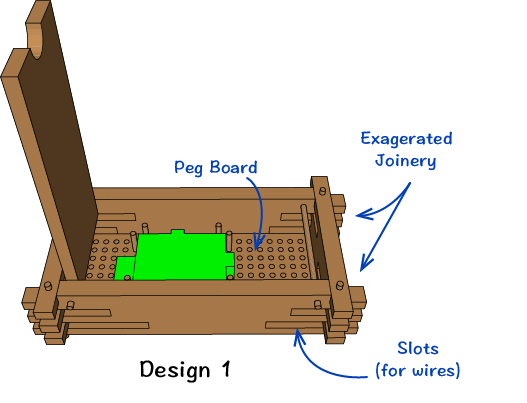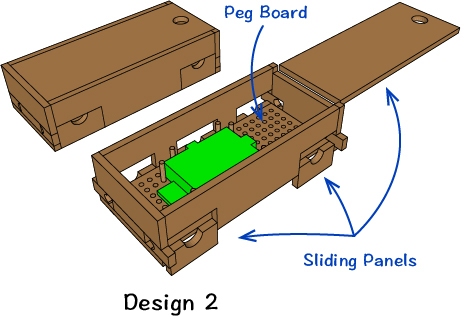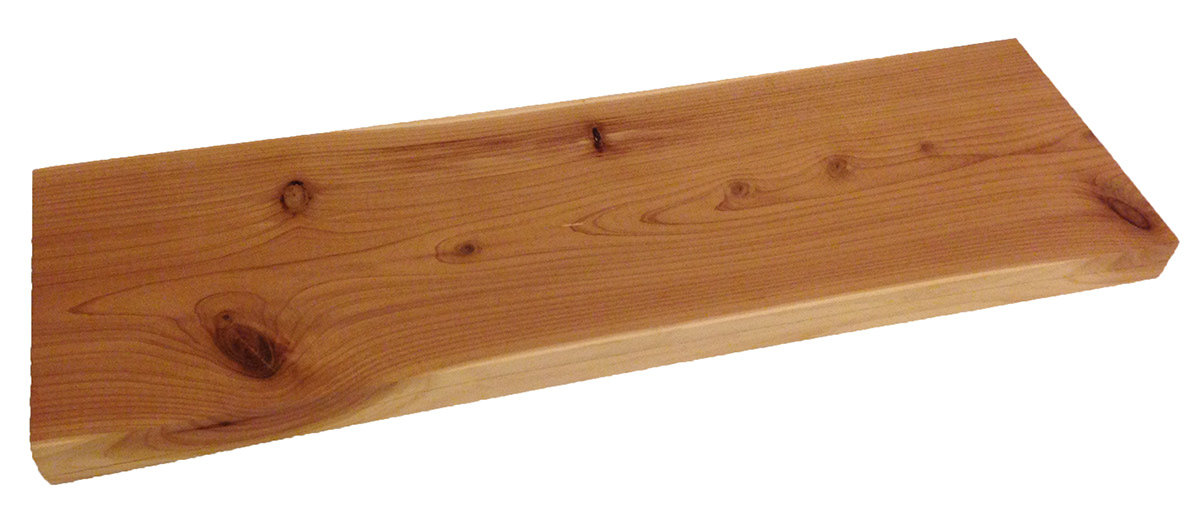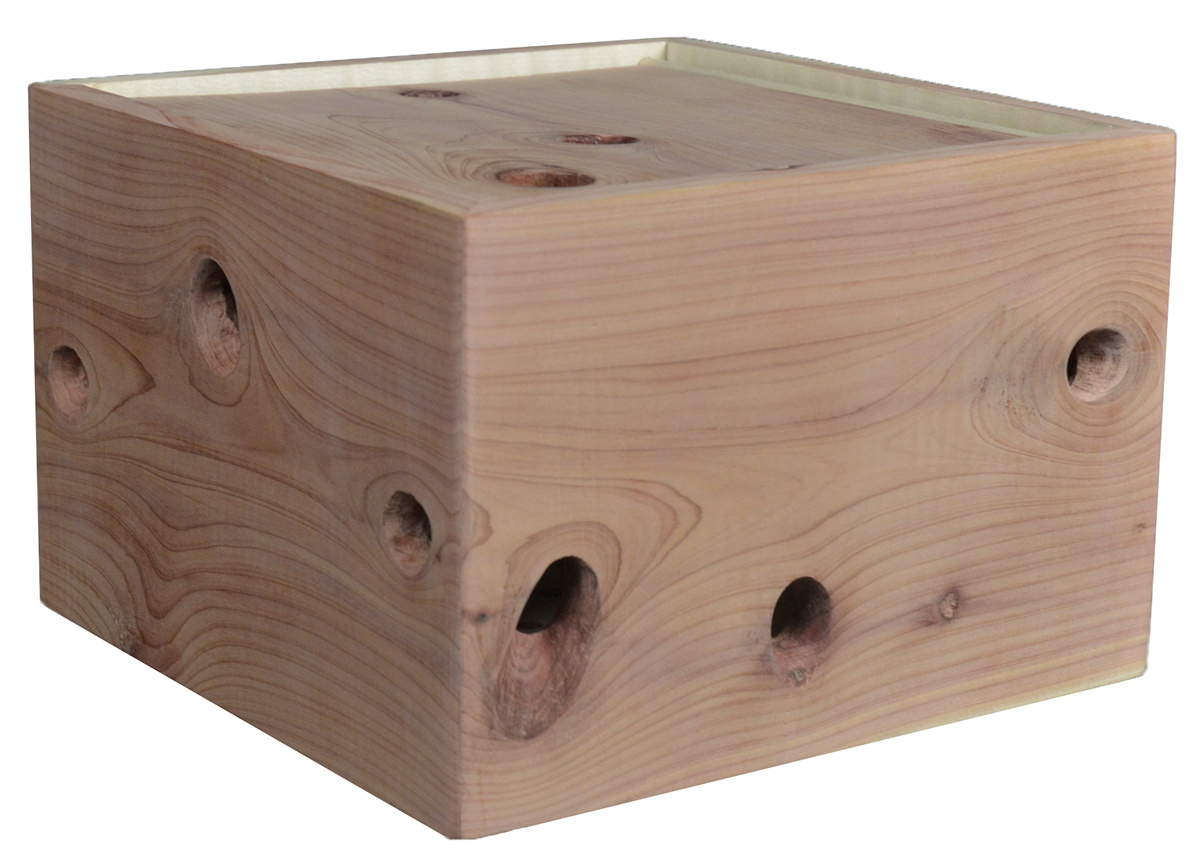Box Problem, Undergraduate 2014
Materials: Wood (Red Cedar, White Maple veneer)
Tools: Woodshop machinery, hand tools, Sketchup
Constraints
The project must be a wooden container, designed for a specific object.
Background
The Raspberry Pi is a computer about the size of a credit card that was developed as an educational tool. It can be used for a wide range of projects, from robotics to media centers, to interactive art.
As a bare circuit board, the Pi needs an enclosure. The board itself, however, is often the smallest part of a project; the supporting cables alone take up more space than the Pi, and most setups require a kit of hardware. There are a lot of enclosures on the market, but none of them have extra storage.



Merging Natural and Synthetic
What ultimately led to the final design of the box was the material. I realized that, in many ways, a plank of cedar is to wood as the Raspberry Pi is to computers. Everything about the cedar- the grain, the numerous knots, the aroma- speaks to the rawness of the material. Likewise, the Raspberry Pi is a computer in a very basic form- no keyboard, no monitor, exposed curcuitry- but because of that, it can be crafted into a wide variety of things.


The Final Design features a clean interior, removed knots for cables to run through, enough space to pack up a kit for transportation, and a peg board base to secure the Pi and hardware in the optimal configuration when in use.



Next Iteration?
Improved organization: The interior’s functionality could be improved with compartments or dividers for smaller components. The box is optimal for projects that require no more extra hardware than cords, but its value over time could be improved if it could accomodate for a wider variety of hardware.
Outside the box: The box is only part of the project- the other part is the Raspberry Pi. The Pi is meant to be a learning and exploratory tool, whose use could determine the form of its next enclosure iteration.
